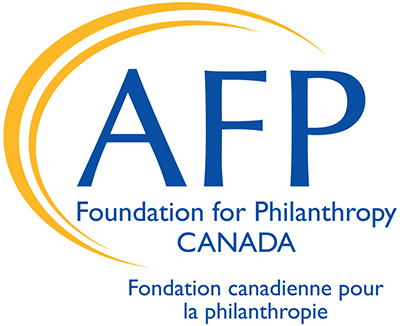First FEP Canada Report Shows Charitable Giving Up Slightly in 2019

Major Gifts Account for Two-Thirds of All Giving, But Coronavirus Presents Huge Challenges for Fundraising, Charities
Giving increased by 1.6 percent in 2019 and the number of donors grew by 2.2 percent, according to the Fundraising Effectiveness Project’s (FEP) 2019 Canada Fourth Quarter Report, with significant giving coming from donors who gave $1,000 or more.
The 2019 Canada Fourth Quarter Report in English and French can be accessed in the Attachments (below).
While the FEP, a program of the Association of Fundraising Professionals (AFP), has been producing reports in the U.S. for years, the 2019 Canada Fourth Quarter Report is the first set of data developed for Canada.
“We are so excited to be able to offer this data and insights to our members and the overall fundraising community in Canada,” said Susan Storey, CFRE, chair of the AFP Foundation for Philanthropy – Canada. “The Fundraising Effectiveness Project not only provides relevant data to help fundraising professionals compare and benchmark their results, but also has a series of tools and resources that charities can use to strengthen their programs and ultimately achieve growth for their important missions. The Foundation is grateful for the support of DonorPerfect Canada, Hilborn and Stephen Thomas Ltd.”
The 1.6 percent rise in charitable giving in 2019 was led by major gifts, defined as gifts of $1,000 or more. Major gifts accounted for 67.9 percent of all giving, while mid-level gifts ($250 to $999) represented 12.4 percent of the total and general gifts (less than $250) made up 21.3 percent of all giving in 2019.
“Major gifts are critical, as the data shows, and it would be easy to assume that we all need to do is focus on major gifts,” said Jim Hilborn, president of Hilborn, one of the sponsors of the FEP Canada project. “But major donors don’t just appear out of nowhere. Fundraisers work to create relationships with donors, build trust and connect donors to the cause. Through this process of cultivation, donors tend to increase their support to the charity. Philanthropy is not sustainable unless we continue to work to create this pipeline of donors and encourage all Canadians to give and engage.”
One of the biggest questions facing the nonprofit sector in 2020—especially for nonprofits not directly serving the victims of the Coronavirus—is if they can attract new donors and keep existing donors engaged. But the difficulty in acquiring and retaining first-time donors is highlighted in the 2019 report.
The report found that the average donor retention rate—that is, the percentage of donors who gave in 2018 and then again in 2019—was 50.8 percent. But there is a significant difference between new donors and repeat donors. Barely a quarter of new donors (23.5 percent) (those who gave to a charity for the first time in 2018) gave again in 2019. However, 68.8 percent of repeat donors (those who had given before 2018 as well) gave also in 2018 and 2019.
“Donor retention is one of the most important data points that charities and fundraisers need to understand in order to improve their fundraising,” said Neil Gallaiford, chief executive officer of Stephen Thomas Ltd., one of the sponsors of the FEP Canada project. “It is so much less expensive for charities to retain existing donors, than find new ones. But on the other hand, charities that continued to prospect for new donors during other crises, such as the 2008 recession, came out of the crisis stronger than charities that pulled back. We have to remember that donors want to see a change in the world, that’s why they give, but we have to continue to ask.”
The coronavirus has already dramatically affected charitable fundraising and giving across Canada, with charities across the country canceling fundraising events and face-to-face campaigns. However, charities are encouraged to continue to keep in touch with donors, talk to them about their important community work and ask for donations.
“We are right in the middle of the coronavirus pandemic, and it’s easy to be overwhelmed by fear and uncertainty and decide to take a break from fundraising,” said Laurence Morel, executive director with DonorPerfect Canada, one of the sponsors of the FEP Canada project. “But in every crisis we face, from natural disasters to economic downturns, we see that the organizations who continued fundraising with empathy and sensitivity are the ones who emerge must successfully. All nonprofits, whether on the front lines or not, should continue to serve their missions and be confident that people will be there to support them.”
For more information on the 2019 Fourth Quarter Report, and to download the Report (English and French) and learn about other free FEP tools to help measure fundraising effectiveness, please visit https://afpglobal.org/fep. (Please note: If you use a Chrome browser and have an issue accessing the form to obtain the reports, please try Firefox or Internet Explorer.)
The Fundraising Effectiveness Project (first established in 2006) and the Growth in Giving database (created in 2012) are both administered by the Association of Fundraising Professionals. The Growth in Giving database is the world’s largest public record of donation activity. The FEP Canada project was launched in 2019. Data from the FEP’s 2019 Fourth Quarter Report is based on data from 119 organizations raising $71,183,266 in 2019. Organizations included in the quarterly report raised between $100,000 and $5,000,000 in 2019. For more information, please visit https://afpglobal.org/fep.


